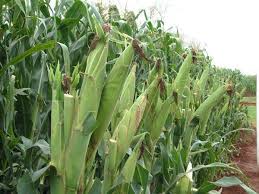Escalating maize prices coupled with low prices of liquid milk could threaten the resilience of the industry, players have said.
In Thyolo, for instance, prices of maize husks have gone up by 75 percent to K7 000 per 50 kilogramme (kg) bag from an average of K4 000 while milk processors are buying a litre of milk at K175.

“The challenge that we are having is that because this is past rainy season, grass, which acts as the main feed for the cows, is in limited supply. And because maize did not do well this year here, maize stocks are also limited. Hence, farmers are using maize husks as an alternative supplement.
“But with the rising demand, we are afraid that prices may escalate further. Already, we are seeing some supplies from Mozambique on the market,” said Tione Ngata, one of the veterinary assistants based in Thyolo.
Malawi Milk Producers Association national director Herbert Chagona, in an interview on Thursday, said farmers are likely to lose out on income due to rising prices of a by-product of the staple grain.
He said the K175 which processors are paying for a litre does not cover production costs, adding that K300 could have been ideal.
The development comes in the wake of temporary closure of Suncrest Creameries Limited by the Department of Environmental Affairs on Wednesday, which according to the association collects more than 23 000 litres daily, which could translate to a potential loss of K4.5 million daily.
“The Milk Act stipulates that farmers cannot sell milk to towns and cities. Only processors are allowed to sell pasteurised milk.
“As a country, we should avoid to compromise on important issues which affect Malawians,” he said.
Treasury has also snubbed the sector’s proposal to introduce 25 percent excise tax on all milk powders and milk products to tame imports.
“Tax on imported milk would have assisted to control the influx of milk from other countries. Malawi is used as dumping place.
“In turn, influx of liquid into the country is affecting milk sales of our liquid milk produced by our farmers in the country. As a country, we need to have protective laws as control valves to balance up imports of dairy products. It is good to promote Best Buy Malawian in practice and not only on paper.”
Milk consumption in Malawi is estimated at 51.8 million litres per annum of all dairy products, with an estimated 57 million litres market potential per annum and 35 million litres annual production by over 12 000 small-scale farmers.
Ministry of Agriculture, Irrigation and Water Development Principal Secretary GrayNyandulePhiri in a brief interview before asking for a questionnaire said while the ministry acknowledges the challenges in the sector, what is most important is negotiations on the prices as the ministry just provides guidelines.



